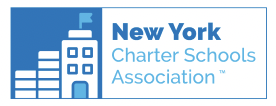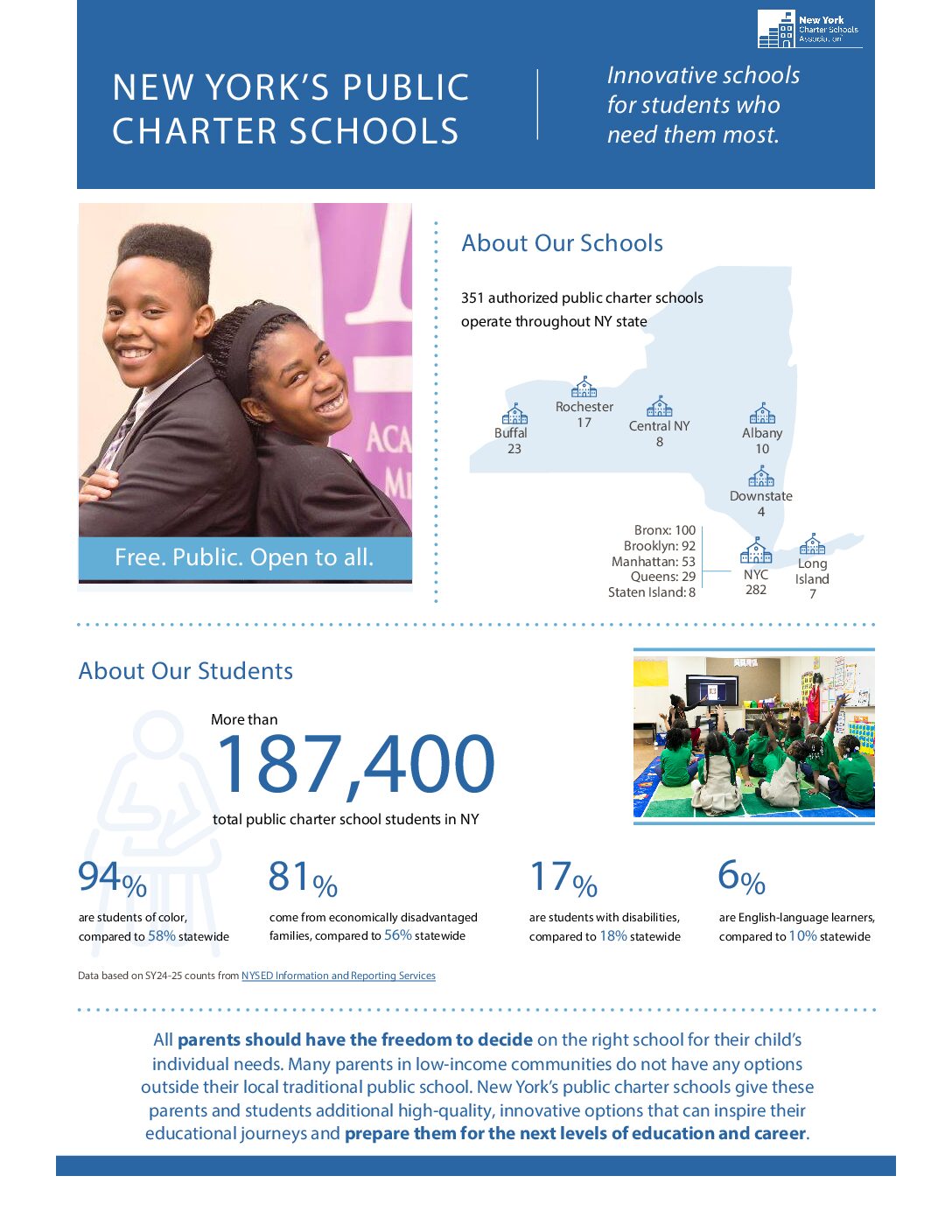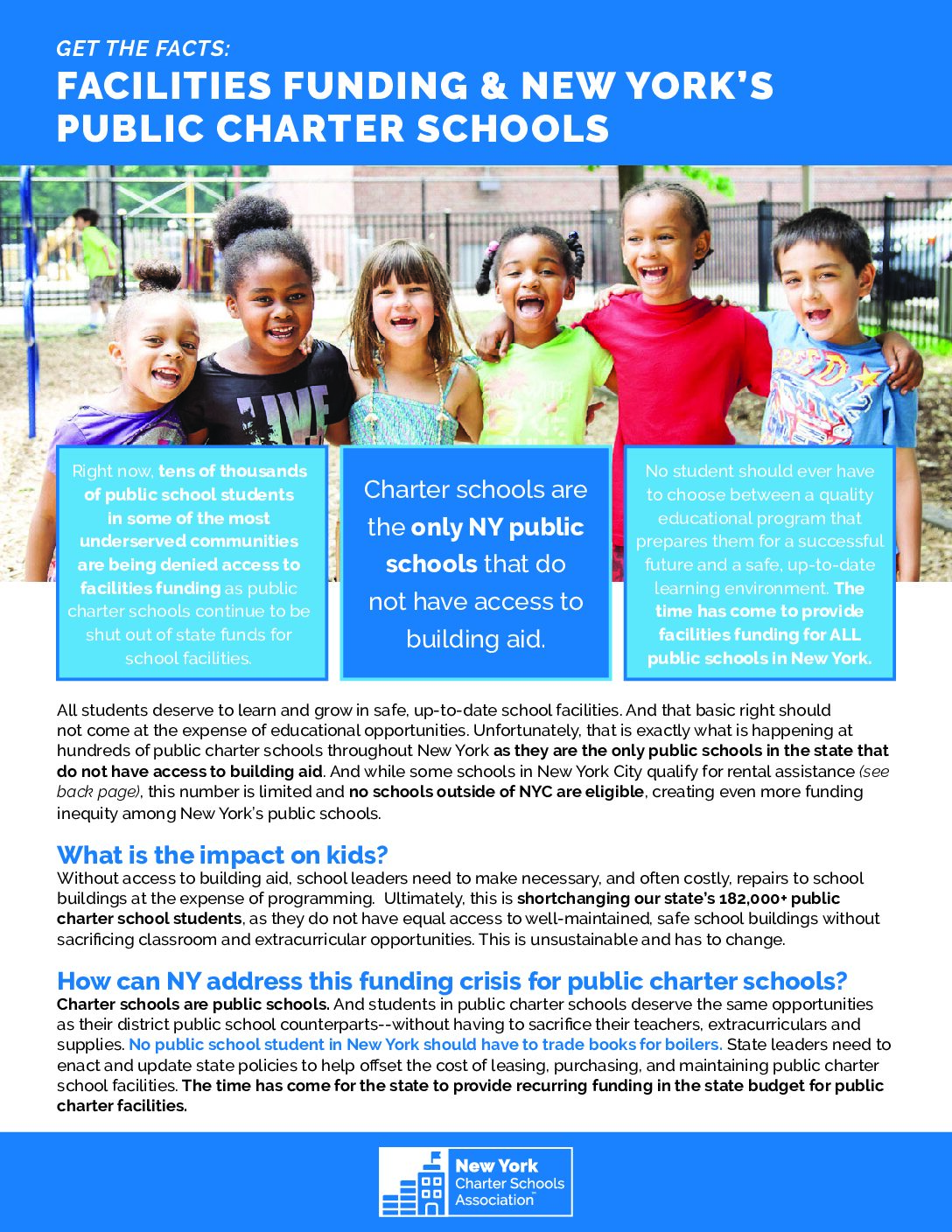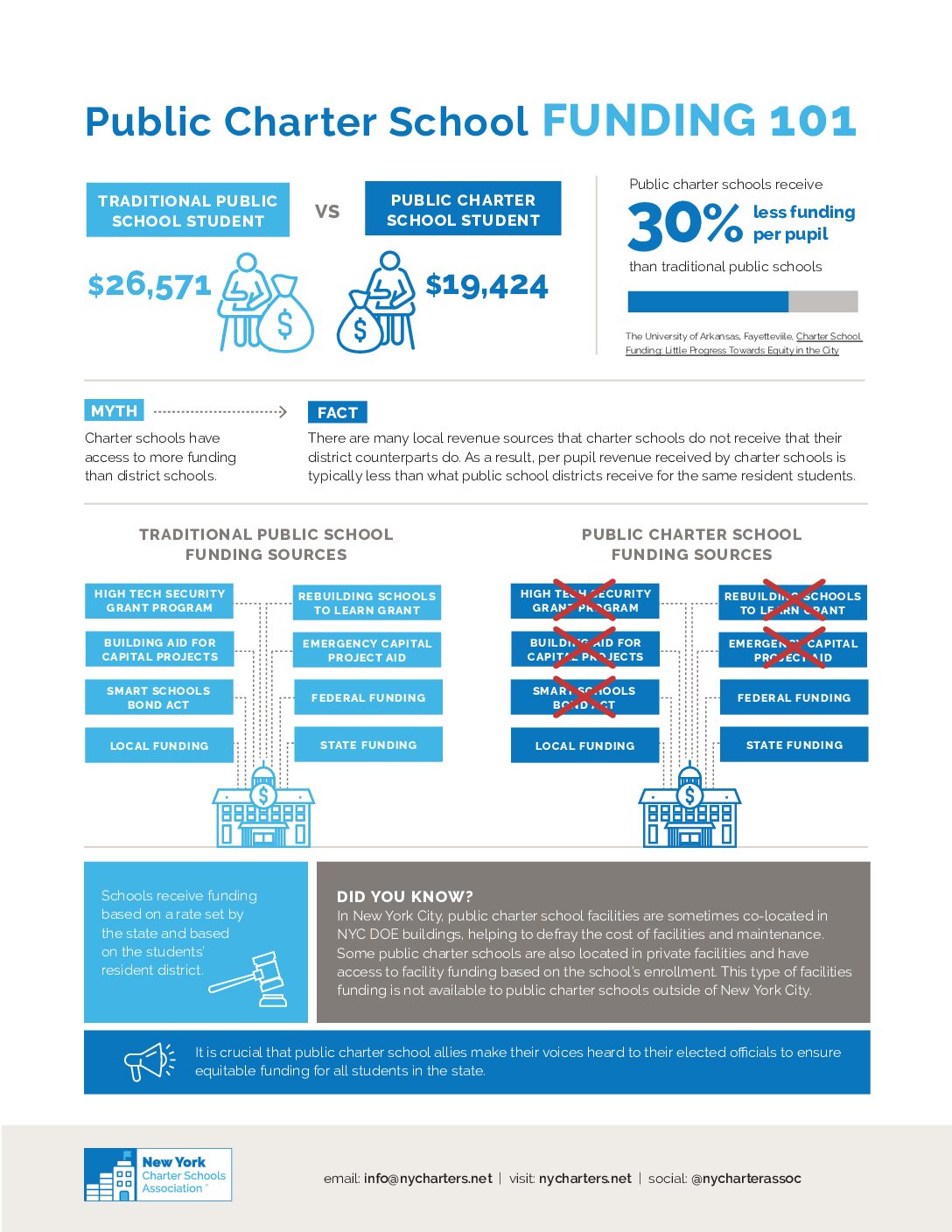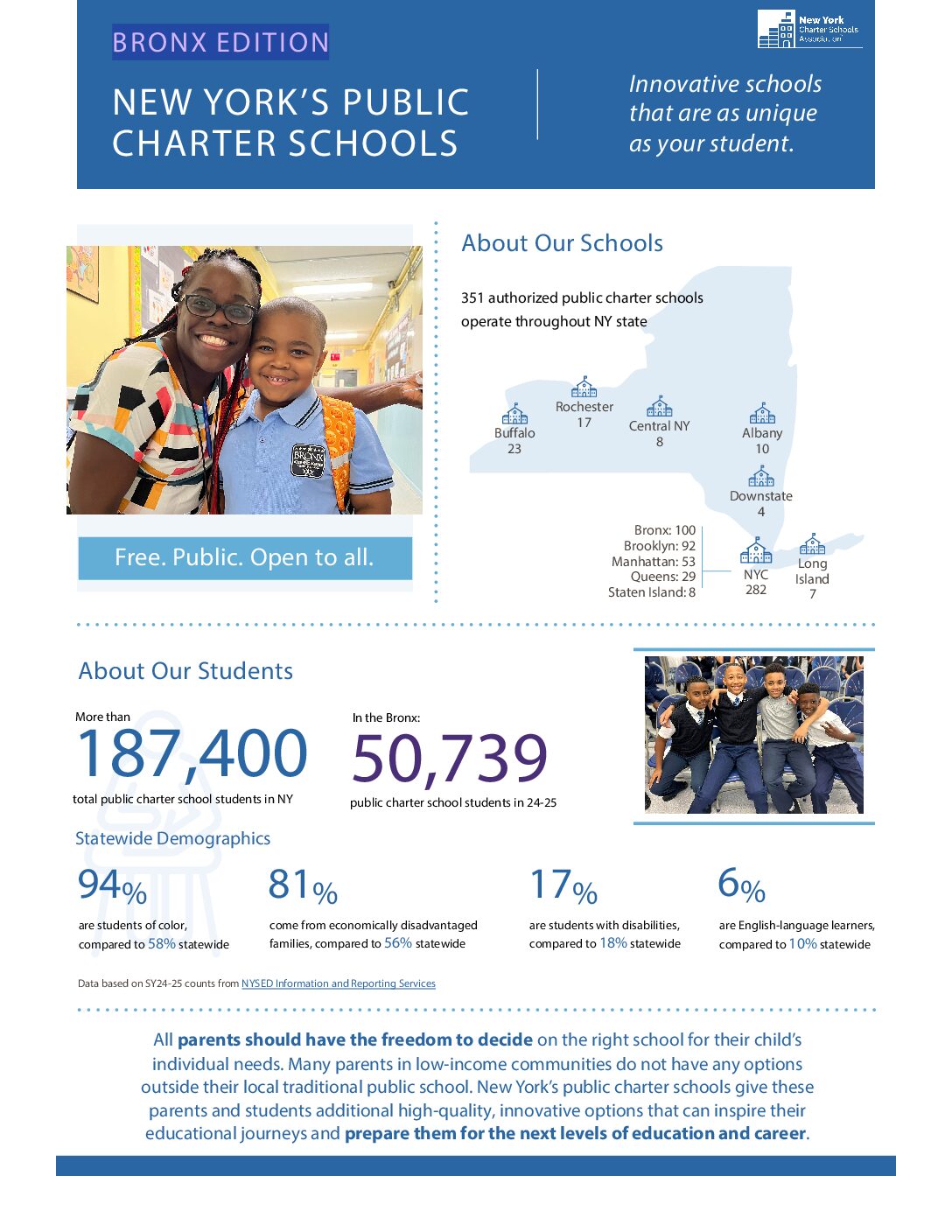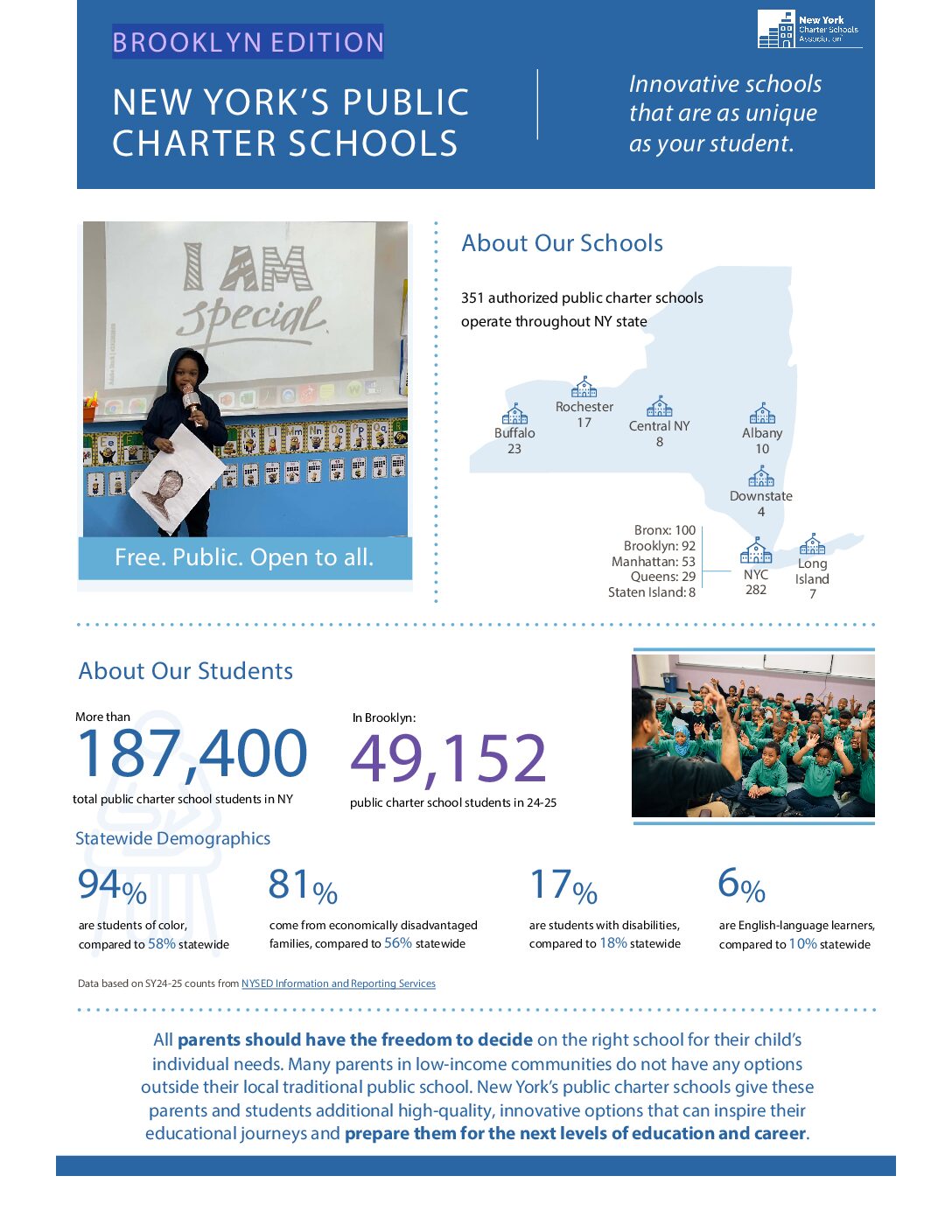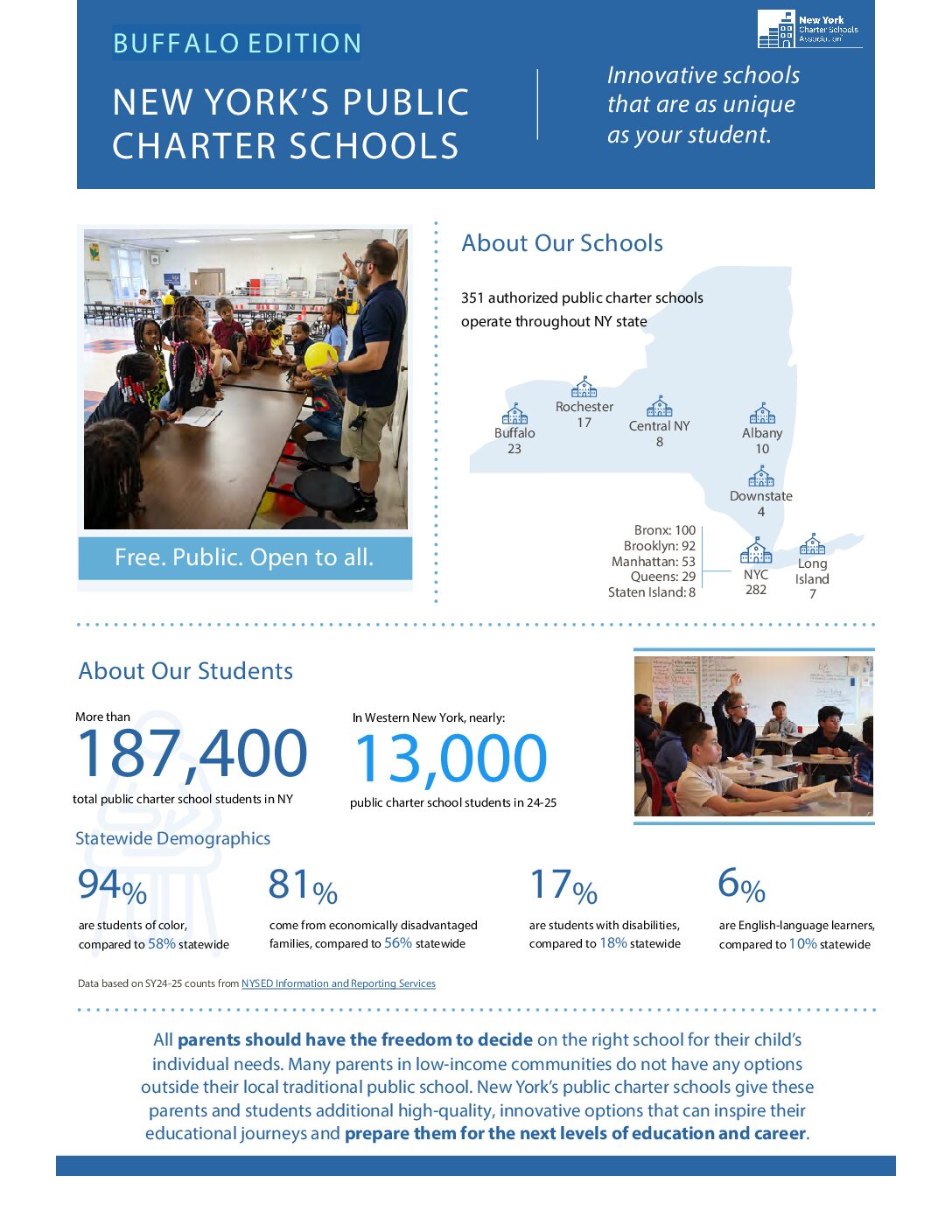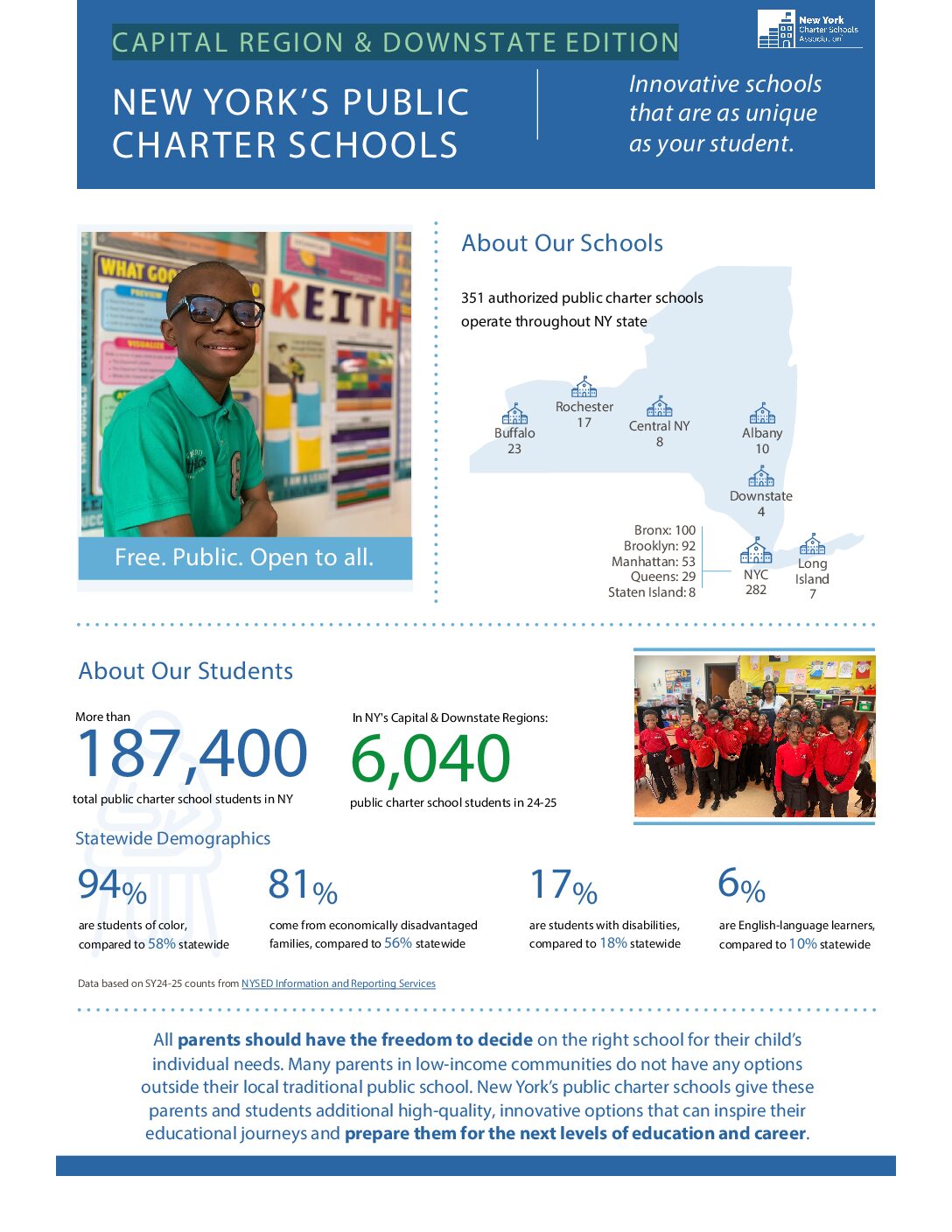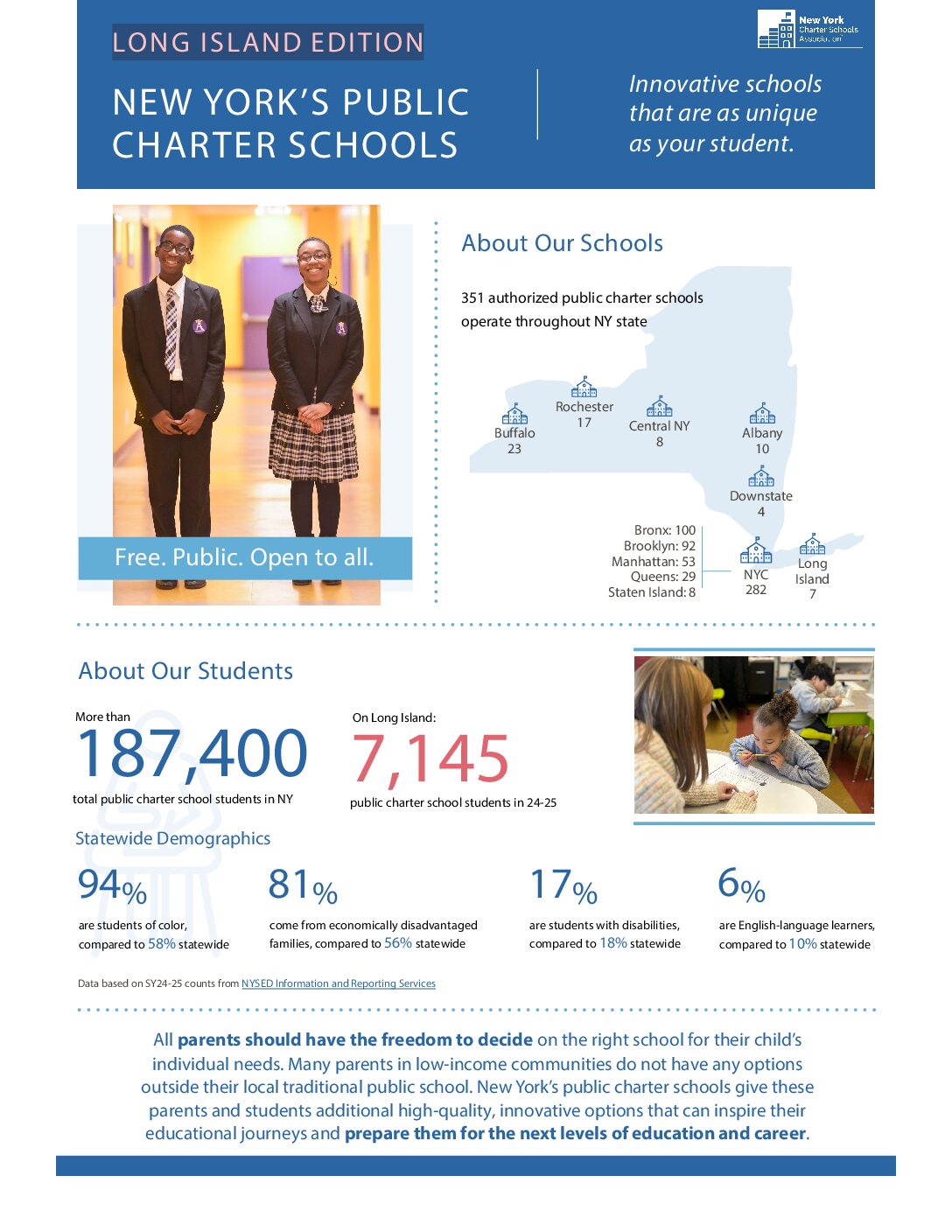Get The Facts
About NY's Public Charter Schools
New York’s public charter school sector spans every major metropolitan area across the state and has grown steadily as student needs in these communities have evolved. The state’s 351 public charter schools offer innovative educational alternatives to the traditional public district schools. Since the state’s first public charter school opened in Harlem in 1999, the number of charter schools in the nation’s largest city has grown to 281, with another 10 across Long Island and other Downstate communities. In New York’s Upstate communities, there are now 58 public charter schools.
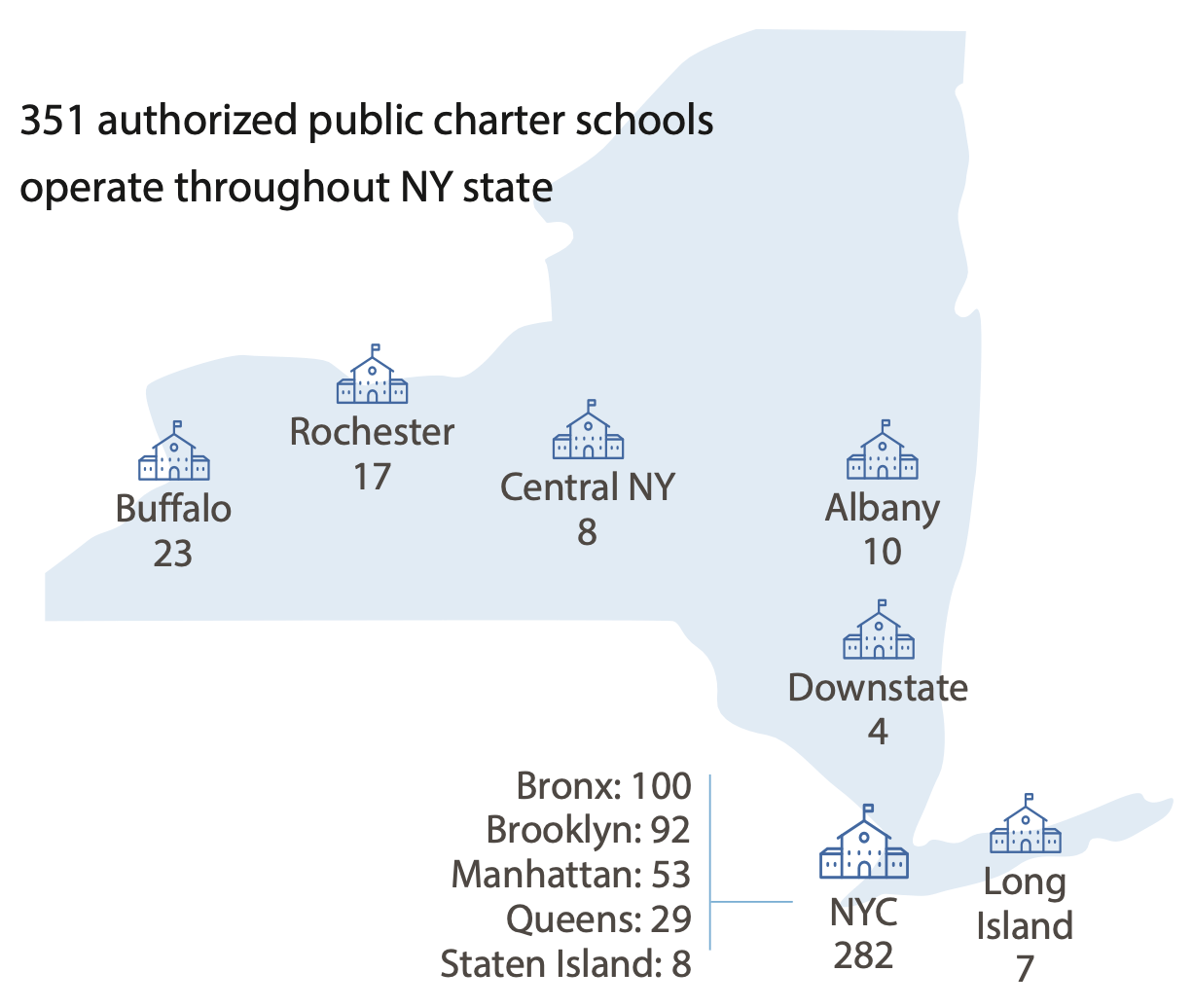
About Our Students
New York’s public charter school students are the most diverse of any school type, far outpacing the statewide averages of students of color and those from economically disadvantaged families. Public charter schools have shown significant results in closing learning gaps across their student population, but especially among those historically disadvantaged groups.
58% student enrollment
ELL students
10% statewide enrollment
Charter Landscape by Region
Find A School Near You
Explore hundreds of unique and innovative public charter schools across New York State in our interactive map and find the one that’s changing lives in your community.
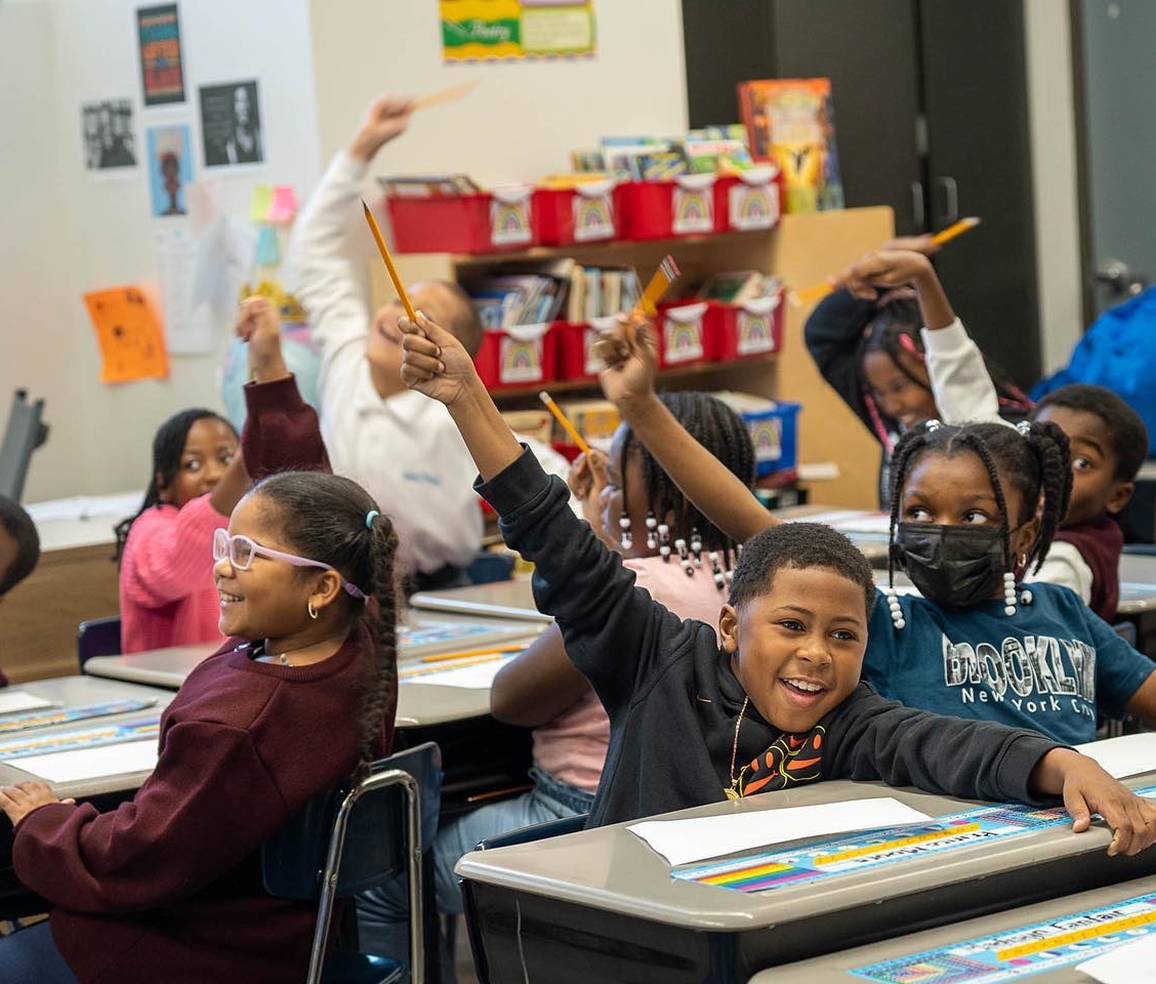
Get Your Questions Answered
Public charter schools are tuition-free, independently operated public schools that are granted the freedom to innovate in their curriculum, programming, culture, and professional development. In exchange for greater flexibility in their operations, public charter schools are subject to increased accountability standards.
In New York State, charter schools are open equally to all students, regardless of background, ability, or income. They strictly follow non-discriminatory enrollment practices, often using a lottery system when demand exceeds available seats.
In New York State, public charter schools are primarily funded through per-pupil allocations of public dollars based on a formula established by the state. This funding comes from the local school district where the student resides and is based on the district’s average spending per student, without including transportation and other specific costs.
However, unlike their public school counterparts, public charter schools do not receive facilities funding from the state. These expenses are often covered by the charter schools’ operating budget.
The only funding allocated from a public school district to a charter school within that district is the per-pupil funding for each student who leaves a traditional school for a public school. In this way, both traditional public schools and public charter schools are funded based on how many students they are tasked with educating.
No. Charter schools are public schools, therefore they cannot have any religious affiliation. New York state law dictates that charter schools must be secular in their curriculum, operations, governance, and admissions.
Public charter schools offer innovative approaches to addressing student needs and inspiring them on their educational journeys. New York’s charter schools have shown significant results in closing achievement gaps among student groups, especially for historically disadvantaged student populations.
Public charter schools were founded on the notion that not every public school works for every student. Public charter schools offer unique alternatives that could better fit a student’s unique needs.

